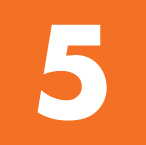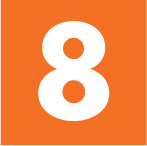


 Salt Lake City. Though it is the home of the Mormon Church, Utah’s capital city is surprisingly progressive, and an ideal launch pad for your Utah adventure. The region played host to the 2002 Winter Olympics, but has more to offer than religious and sporting sights. Don’t miss the new museums, walkable downtown shopping at Gateway and City Creek, and an emerging dining scene.
Salt Lake City. Though it is the home of the Mormon Church, Utah’s capital city is surprisingly progressive, and an ideal launch pad for your Utah adventure. The region played host to the 2002 Winter Olympics, but has more to offer than religious and sporting sights. Don’t miss the new museums, walkable downtown shopping at Gateway and City Creek, and an emerging dining scene.
 Park City and the Southern Wasatch. Miners tunneled throughout the beautiful Wasatch Range to build the local economy, but modern-day prospectors look skyward to winter snow and summer sunshine to drive the economy in this primo spot. Three world-class resorts, historic Main Street, and the Sundance Film Festival are just a few reasons to escape to the mountains less than an hour from Salt Lake City Airport. The bucolic college town of Provo, home to America’s “driest” university (Brigham Young University), lies at the other end of the excitement spectrum.
Park City and the Southern Wasatch. Miners tunneled throughout the beautiful Wasatch Range to build the local economy, but modern-day prospectors look skyward to winter snow and summer sunshine to drive the economy in this primo spot. Three world-class resorts, historic Main Street, and the Sundance Film Festival are just a few reasons to escape to the mountains less than an hour from Salt Lake City Airport. The bucolic college town of Provo, home to America’s “driest” university (Brigham Young University), lies at the other end of the excitement spectrum.
 North of Salt Lake City. Much of northern Utah is within the boundaries of the Wasatch-Cache National Forest, with breathtaking landscapes, miles of trails, and the turquoise waters of Bear Lake. Busy tourists invariably skip this region for the national parks in the south, so come here to escape crowds. Ogden and Logan offer services, restaurants, ski resorts, and universities.
North of Salt Lake City. Much of northern Utah is within the boundaries of the Wasatch-Cache National Forest, with breathtaking landscapes, miles of trails, and the turquoise waters of Bear Lake. Busy tourists invariably skip this region for the national parks in the south, so come here to escape crowds. Ogden and Logan offer services, restaurants, ski resorts, and universities.
 Dinosaurland and Eastern Utah. Imagine high Western skies and an endless range, and you have a vision of eastern Utah. The Uinta Range of the Rocky Mountains is a land of craggy peaks and remote ranches, where fertile farms and grazing lands mingle with red-rock deserts. Mirror Lake, Flaming Gorge, and the Dinosaurland National Monument deliver entirely unique experiences.
Dinosaurland and Eastern Utah. Imagine high Western skies and an endless range, and you have a vision of eastern Utah. The Uinta Range of the Rocky Mountains is a land of craggy peaks and remote ranches, where fertile farms and grazing lands mingle with red-rock deserts. Mirror Lake, Flaming Gorge, and the Dinosaurland National Monument deliver entirely unique experiences.
 Capitol Reef National Park. Formed by cataclysmic forces that have pushed and compressed the earth, this otherworldly landscape is marked by oversize, unique sandstone formations, some layered with plant and animal fossils. It is best known for its 100-mile long geological feature, the Waterpocket Fold. Loa, Teasdale, and Torrey have become hot spots for artists and wanderers.
Capitol Reef National Park. Formed by cataclysmic forces that have pushed and compressed the earth, this otherworldly landscape is marked by oversize, unique sandstone formations, some layered with plant and animal fossils. It is best known for its 100-mile long geological feature, the Waterpocket Fold. Loa, Teasdale, and Torrey have become hot spots for artists and wanderers.

 Zion National Park. Known for its sheer 2,000-foot cliffs and river-carved canyons, Zion deserves to be on every Las Vegas and/or Grand Canyon agenda. There is no match for the soaring perspective on trails like Angels Landing and the Narrows, but you don’t have to hike to see why the park is so special: the roadways leading through Zion provide ample viewing opportunities.
Zion National Park. Known for its sheer 2,000-foot cliffs and river-carved canyons, Zion deserves to be on every Las Vegas and/or Grand Canyon agenda. There is no match for the soaring perspective on trails like Angels Landing and the Narrows, but you don’t have to hike to see why the park is so special: the roadways leading through Zion provide ample viewing opportunities.
 Bryce Canyon National Park. The bizarrely shaped, bright red-orange rocks that are this park’s signature formation are known as hoodoos. If you can hit the trails at sunrise or sunset, your reward will be amazing colors; the sun’s light at either end of the day intensifies the rocks’ deep orange and crimson hues. See every vista in the park from the 18-mile Main Road, then retreat to the historic Lodge at Bryce Canyon for dinner or a ranger talk.
Bryce Canyon National Park. The bizarrely shaped, bright red-orange rocks that are this park’s signature formation are known as hoodoos. If you can hit the trails at sunrise or sunset, your reward will be amazing colors; the sun’s light at either end of the day intensifies the rocks’ deep orange and crimson hues. See every vista in the park from the 18-mile Main Road, then retreat to the historic Lodge at Bryce Canyon for dinner or a ranger talk.
 Southwestern Utah. You can play golf year-round in the retirement community of St. George, but the region’s best attractions are not man-made. Venture onto trails, view an active dinosaur excavation site, or lose yourself in the mostly road-free, expansive Grand Staircase–Escalante National Monument.
Southwestern Utah. You can play golf year-round in the retirement community of St. George, but the region’s best attractions are not man-made. Venture onto trails, view an active dinosaur excavation site, or lose yourself in the mostly road-free, expansive Grand Staircase–Escalante National Monument.
 Arches National Park. The largest collection of natural sandstone arches in the world—more than 2,000—are within this park, but the landscapes framed by the graceful structures leave just as lasting an impression. The desert here is a rich tapestry of red, purple, and chocolate hues. Look carefully for hardy wildlife and desert flowers—true survivor tales under year-round sunshine.
Arches National Park. The largest collection of natural sandstone arches in the world—more than 2,000—are within this park, but the landscapes framed by the graceful structures leave just as lasting an impression. The desert here is a rich tapestry of red, purple, and chocolate hues. Look carefully for hardy wildlife and desert flowers—true survivor tales under year-round sunshine.
 Canyonlands National Park. This might be the most difficult park to truly fathom without putting on your hiking boots. Canyonlands is best enjoyed on a hike, mountain bike, or raft. You’ll wish you were a high-flying bald eagle or red-tail hawk to appreciate the precipice of adjacent Dead Horse Point and the wishbone canyons carved by the Colorado and Green rivers.
Canyonlands National Park. This might be the most difficult park to truly fathom without putting on your hiking boots. Canyonlands is best enjoyed on a hike, mountain bike, or raft. You’ll wish you were a high-flying bald eagle or red-tail hawk to appreciate the precipice of adjacent Dead Horse Point and the wishbone canyons carved by the Colorado and Green rivers.
 Moab and Southeastern Utah. Home to the world-famous Slick Rock mountain bike trail—and some of America’s best river rafting—Moab is a countercultural retreat with quirky and original boutiques, restaurants, bars, and locals. The perfect base for Arches and Canyonlands National Parks, this area’s sagebrush flats, slot canyons, broad mesas, and snowcapped peaks leave a lasting impression.
Moab and Southeastern Utah. Home to the world-famous Slick Rock mountain bike trail—and some of America’s best river rafting—Moab is a countercultural retreat with quirky and original boutiques, restaurants, bars, and locals. The perfect base for Arches and Canyonlands National Parks, this area’s sagebrush flats, slot canyons, broad mesas, and snowcapped peaks leave a lasting impression.
When to Go
Home to both inhospitable desert and mountains renowned for their powdery snow, Utah is a breathtakingly bipolar state. You can bike, fish, and swim year-round in St. George, or ski from November to July 4 at Snowbird ski resort. Visit national parks in spring and fall to avoid millions of visitors, but be prepared for shoulder season rain or snow. Fall color can be found in nearly every canyon in the state. In July and August, secure lodging in advance as even RV parks and campgrounds fill to capacity.

Getting Around
Utah’s pristine beauty requires a car, motorcycle, or RV for access. In summer, winding mountain roads and long dry basins are either a boon (convertibles, motorcycles) or bane (some roads were not built with RVs in mind). In winter, high elevations and serious storms make a sturdy car the best option. Storms occasionally shut down highway passes and/or resort access.
The only places in Utah where you can get around without a car are Salt Lake City and Park City. You can enjoy two world-class ski resorts in Park City (grab a taxi or shuttle from the airport and ride the town’s public transportation), though it’s harder to get to resorts like Alta, Snowbasin, or Snowbird.
The Predominant Religion
The population of Utah was estimated to be 3 million in 2016.
Mormons generally don’t use or consume tobacco, caffeinated drinks, or liquor, but these products are widely available in stores. Members of the LDS faith generally observe Sunday as a day of rest, so many stores (including liquor stores), restaurants, and other services may be closed.
Mark Your Calendar
Utah has a few annual events that are worth planning your trip around.
 Sundance Film Festival takes place annually over 11 days at the end of January (January 18–January 28, 2018).
Sundance Film Festival takes place annually over 11 days at the end of January (January 18–January 28, 2018).
 Utah’s Pioneer Day celebrations mark Brigham Young’s arrival on July 24, 1847. Statewide, you will find fireworks, rodeos, parades, and fairs.
Utah’s Pioneer Day celebrations mark Brigham Young’s arrival on July 24, 1847. Statewide, you will find fireworks, rodeos, parades, and fairs.
 Ski season traditionally begins Thanksgiving week at many resorts. Plan to ski in late November, March, or April to avoid the biggest crowds. Prices spike and accommodations fill around major holidays like President’s Day.
Ski season traditionally begins Thanksgiving week at many resorts. Plan to ski in late November, March, or April to avoid the biggest crowds. Prices spike and accommodations fill around major holidays like President’s Day.
Utah’s open roads are frequented by Tour de France stars, including locals Levi Leipheimer and David Zabriskie, and since 2010 the Larry H. Miller Tour of Utah has been one of America’s premier multiday stage races. Add to that Moab’s Slick Rock, Porcupine, and White Rim trails for mountain bikers, and Utah is one of the top destinations for cycling in the United States.
Rules of the Road
On the road, stay as close as possible to the right side, in single file. If you’re nervous about cars, hop on the Legacy Parkway Trail near Salt Lake City Airport and ride 15 miles north on a perfectly flat, paved trail that skirts Great Salt Lake. If you’re downstate, the rural roads outside St. George, Cedar City, and Moab offer miles of varied topography with relatively little traffic to affect the experience.
Best Rides
Antelope Island State Park. It’s cheaper to enter Antelope on two wheels, and much more enjoyable, but only strong riders should brave the 7-mile causeway, especially in the heat of summer. Once you reach the island, however, there are miles of rolling and empty trails.
Bonneville Shoreline Trail. Partway up and along the Wasatch Front on the northeast side of Salt Lake City, this hiking and mountain biking trail offers expansive views of the entire Salt Lake Valley, plus points west and south. Its level of difficulty is easy to moderate, with challenging stretches near the University of Utah Hospital.
Flaming Gorge National Recreation Area. Because it mixes high-desert vegetation—blooming sage, rabbit brush, cactus, and wildflowers—and red-rock terrain with a cool climate, Flaming Gorge is an ideal destination for road and trail biking. The 3-mile round-trip Bear Canyon–Bootleg ride begins south of the dam off U.S. 191 at the Firefighters’ Memorial Campground and runs west to an overlook of the reservoir.
Klondike Bluffs Trail. This trail offers the less-experienced mountain biker a relatively easy introduction to the sport. The climb to Klondike Bluffs is not difficult, and the reward is a fantastic view into Arches National Park. Access is off U.S. 191, 15 miles north of Moab—not the main park entrance.
Slickrock Trail. America’s most famous mountain-biking trail is a 12-mile loop through sagebrush and sand, over slick granite rock and across undulations that can only be described as moonlike. It’s well marked, popular, and incredibly challenging. Not recommended for kids under 12.
Wasatch Over Wasatch Trail. Known as the “W.o.W. Trail,” this new single-track winds through Pine Canyon and definitely has the coveted wow-factor, with 12 miles of breathtaking views. Be prepared for a lot of climbing and a quick descent at the end. Expansion plans will connect the trail to the Park City-area trail system—almost 400 miles of trail and the first-ever trail system to be designated by the International Mountain Biking Association as a “Gold Level Ride Center.”
Here, blue-ribbon trout streams remain much as they were when Native American tribes, French fur trappers, and a few thousand miners, muleskinners, and sodbusters first placed a muddy footprint along their banks.
What to Bring
Bring or rent a rod and reel, waders, vest, hat, sunglasses, net, tackle, hemostats, and sunscreen. Always buy a fishing license.
When to Go
The season is always a concern when fishing. Spring run-offs can cloud the waters. Summer droughts may reduce stream flows. Fall weather can be unpredictable in the west.
Best Fishing
Flaming Gorge. For some of the finest river fishing, try the Green River below Flaming Gorge Dam, where rainbow and brown trout are plentiful and big. Fed by cold water from the bottom of the lake, this stretch has been identified as one of the best trout fisheries in the world.
Lake Powell. Formed by the construction of Glen Canyon Dam, this popular recreational attraction in southern Utah is home to a wide variety of fish, including bass—striped, smallmouth, and largemouth—as well as bluegill and channel catfish. Ask the locals about night fishing for stripers.
Provo River. One of Utah’s world-class fly-fishing rivers, the Provo is divided into three sections, starting in the High Uintas Wilderness about 90 minutes east of Salt Lake City and ending in Utah Lake in Provo. Brown and rainbow trout are the big draw here.
Don sturdy boots, pack water, lean on the hardworking park rangers for guidance, and head out for a few hours. Your heart, lungs, and soul will thank you. Trailheads depart from most cities, too, including worthy treks from downtown Salt Lake City, Ogden, Park City, and Moab.
Safety
Know your limits, and make sure the terrain you are about to embark on does not exceed your abilities. It’s a good idea to check the elevation change on a trail before you set out, and be careful not to get caught on exposed trails at elevation during afternoon storms (rain or snow) any time of year. Dress appropriately, bringing layers to address changing weather conditions, and always carry enough water. Also, make sure someone knows where you’re going and when to expect your return. Also be advised that much of rural Utah is a black hole for cellular coverage.
When to Go
Spring in Utah brings an explosion of wildflowers and color (Alta Ski Area and Mirror Lake are two destinations near Salt Lake City to walk in May or June). Fall brings a turning of cottonwood and cypress leaves that rivals autumn in the Shenandoah mountains. Summer’s heat makes many desert locales unbearable, but the shade and breeze of Utah’s canyons have offered respite for centuries. The hardiest outdoor types will even gear up in the dead of winter with snowshoes.
Best Hikes
Angels Landing Trail, Zion National Park. A 5-mile round-trip hike, with 1,500 feet of elevation gain, including a series of steps known as “Walter’s Wiggles,” this is the one trail in Zion no healthy hiker should miss. If you’re afraid of heights, stop short at Scout’s Lookout for the breathtaking view and head back down the trail.
Fiery Furnace Walk, Arches National Park. This two- to three-hour walk through narrow sandstone canyons is only offered via ranger-led tour (daily from mid-March to October). The landscape is an unforgettable, physically demanding maze, and the rangers illuminate the geologic history and reassure nervous hikers.
Grandeur Peak. For views of the Salt Lake Valley and Parley’s Canyon, start at the trailhead at Church Fork Picnic Area in Mill Creek Canyon. This wide trail follows a stream and tops out at almost 8,300 feet. With quick and easy access from downtown, this 6-mile round-trip hike is a great way to get a bird’s-eye view of the capital city.
Hickman Bridge Trail, Capitol Reef National Park. Just 2 miles long, this trail is a perfect introduction to Capitol Reef. You’ll walk past a great natural bridge as well as Fremont culture ruins.
Mount Timpanogas. An hour-and-a-half southeast of Salt Lake City, “Timp” is one of the tallest and most striking of the Wasatch Mountains. Access to Timpanogas Cave is via a 3-mile round-trip hike led by park rangers daily in summer. Be aware that outside temperatures can reach triple digits, even at 6,700 feet—but inside the caves it’s 45°F year-round.
The Narrows Trail, Zion National Park. Experience the thrill of walking in the Virgin River, peering up at millennia-old rock canyons, hanging gardens, and sandstone grottoes. To see the Narrows you must wade—and occasionally swim—upstream through chilly water and over uneven, slippery rocks, but the views are breathtaking.
Horseback-riding options in Utah run the gamut from hour-long rides on a well-worn trail to multiday excursions out into the wilderness. June through August is the peak period for horse-packing trips; before signing up with an outfitter, inquire about the skills they expect.  TIP → Most horseback-riding outfitters have a weight limit of 250 pounds, and children must be at least seven years old.
TIP → Most horseback-riding outfitters have a weight limit of 250 pounds, and children must be at least seven years old.
Best Horseback Rides
Bryce Canyon National Park. Sign up for a guided tour at Ruby’s Horseback Adventures near the park entrance. Let the animals do the work as you descend and emerge hundreds of feet into the Bryce Amphitheatre to see the unrivaled orange-pink spires and hoodoos.
Capitol Reef National Park. Much of this park is accessible only on foot or horseback, which promises an experience of wide-open Western spaces that hark back to the time of cowboys. Indeed, some of the trails may have been used by herdsmen and Native Americans. Sandstone, canyons, mesa, buttes—they’re all here. Check at the visitor center for details of horseback-riding outfitters and opportunities for an unforgettable experience.
Zion Ponderosa Ranch Resort. Just east of Zion National Park at the site of a former pioneer logging camp, this multipursuit resort offers plenty of things to do after time spent in the saddle meandering along the multitude of pioneer-era trails. When you’re not in the saddle you can drive an ATV, ride a zip line or mountain bike, or learn how to rappel and rock climb on the resort’s 40-foot climbing wall. At the end of a long day, relax in a cabin, glamp in a deluxe tent, or hunker down in your own private covered wagon.
Dozens of tour companies throughout the West offer relatively tame floats—starting at around $70 for one day. Others cater more to thrill-seeking tourists.
How to Choose a Trip
Beginners and novices are encouraged to use guides, and many offer luxurious multiday trips in which they do everything, including searing your steak in a beach barbecue, setting up your tent, and rolling out your sleeping bag.
The International Scale of River Difficulty is a widely accepted rating system that ranges from Class I (the easiest) to Class VI (the most difficult—think Niagara Falls). When in doubt, ask your guide about the rating on your route before you book. Ratings can vary greatly throughout the season due to run-off and weather events. Midsummer is ideal for rafting in the West, although many outfitters will stretch the season, particularly on calmer routes.
Best River Runs
Cataract Canyon. It begins below Moab and takes three to five days as you wind your way to Lake Powell. Expect a smooth ride for the first day or two, before you dive into the rapids. This multiday adventure offers broad beaches, Native American ruins, deep-color canyon walls, and waves as high as 20 feet.
Colorado River, Moab. The Grand Poobah of river rafting in Utah. There are numerous outfitters in the Moab area with a wide assortment of half, full, and multiday trips on the river. Even though it is the same river, it meanders in parts and rages in others.
Green River. Before it meets up with the Colorado River, the Green River offers plenty of stunning scenery and fast water through canyons such as Desolation and Gray. Desolation Canyon is a favorite family trip, with wildlife sightings, hikes, and beaches. Sign on with an outfitter in the town of Green River.
Weber River. You may see more kayakers than rafters on the Weber, but there are stretches that offer Class II rapids that are commercially run. For a one-day excursion, this is a great side trip from Salt Lake City or Park City.
Westwater Canyon. This short stretch of river can be negotiated in two to three hours, but with notable rapids like Funnel, Sock-it-to-me, and Skull Rapid, it’s an action-packed ride.
Utah’s “greatest snow on Earth” can be a revelation for skiers and snowboarders familiar only with the slopes of other regions. In Utah the snow builds up quickly, leaving a solid base at each resort that hangs tough all season, only to be layered with thick, fluffy powder that holds an edge, ready to be groomed into rippling corduroy or left in giddy stashes along the sides and through the trees. Off-piste skiing and half-pipe-studded terrain parks are the norm, not the special attractions, here. The added bonus of Utah terrain is that it has something for everyone, often within the same resort.
Best Slopes
Alta and Snowbird resorts. These Little Cottonwood Canyon neighbors, within 40 minutes of downtown Salt Lake City, are regularly ranked the top ski resorts in the United States. Seasons with 500 to 600 and more inches of Utah’s famous powder are at the root of the accolades. A joint pass lets you ski both mountains on one ticket, but snowboarders are still not allowed at Alta. Snowbird has the longest season in the nation, occasionally staying open through July 4.
Brian Head Resort. The closest Utah ski resort to the Las Vegas airport, Brian Head is worth checking out for the novelty of skiing in southern Utah. The red-orange rocks of Cedar Breaks National Monument form a backdrop to many trails, which tend to focus on beginner and intermediate skiers and snowboarders. Experts can ski off the 11,000-foot summit.
Deer Valley and Park City resorts. The two Park City resorts are known for their great groomed trails, fine dining, and accommodations. Deer Valley is one of two resorts in America that doesn’t allow snowboarders, but Park City Mountain Resort, which now encompasses Park City and the resort area formerly known as Canyons, caters to both skiers and riders. The skiing is excellent, but for many it’s the whole experience—including the midday feast at Silver Lake Lodge and farm-to-table dining at The Farm—that keeps them coming back.
Snowbasin and Powder Mountain resorts. An hour north of Salt Lake City, Ogden-area residents will tell you the best skiing is at this pair of resorts. Powder Mountain has more skiable terrain than any resort in North America, and Snowbasin was good enough to host the Olympic downhill and slalom during the 2002 Winter Games. These two are often cheaper and less crowded than the Salt Lake City and Park City resorts.
Utah Olympic Park. At the site of the 2002 Olympic bobsled, luge, and ski-jumping events in Park City, you can take recreational ski-jumping lessons or strap in behind a professional driver for a bobsled ride down the actual Olympic course.
Dinosaur Fossils
The context of dinosaur skeletons in urban museums never quite fits, but when you see giant rib fossils protruding from the ground in central Utah, your lessons in Jurassic history will snap into focus.
Cleveland-Lloyd Dinosaur Quarry. On the way to Moab (via 30 miles of dirt road), lies a dense concentration of at least 46 allosaurus remains. It’s a mystery to scientists why so many bones, but not intact skeletons, are clustered here.
Dinosaur National Monument. Near the Wyoming and Colorado borders, you will find an exposed hillside with 65-million-year-old fossils, plus hiking trails and campsites.
Natural History Museum of Utah. The stunning copper-clad exterior of this museum blends into the mountains east of Salt Lake City. Inside, find a massive gallery with more than 30 reconstructions of dinosaur skeletons. You can also watch paleontologists working on fossils in a glassed-in lab.
St. George Dinosaur Discovery Site at Johnson Farm. At the very southern end of the state, a local optometrist found dozens of dinosaur tracks in 2000 and turned his family farm into a museum.
Scenic Drives
Cowboy poets and country artists sing the praises of the wide-open spaces of the West, but Utah’s size can create challenges for time-pressed visitors. Take these routes and the miles will fly by—except for all the times you’ll want to stop to take photographs.
Highway 89. If you’ve had enough of Interstate 15, Highway 89 is a 502-mile scenic alternative from Bear Lake on the Idaho border to Glen Canyon on the Arizona line. Other bodies of water that are accessible from Highway 89 include Great Salt Lake and Utah Lake. Take Highway 89 not to save time, but to see historic sites like the Pony Express and Oregon trails, charming old downtowns, and Utah’s agricultural heart including orchards, farms, and ranches.
Provo River Canyon. The gateway to Robert Redford’s Sundance Resort, this drive from Provo to Park City parallels rushing rapids during snow melt and soothing gurgles the rest of the year. Parley’s, Emigration, Big and Little Cottonwood, Mill Creek, Ogden, and Logan are seven other canyons from the Wasatch front equally worth driving. Because of their proximity to Utah’s population base, all have trailheads, services, and restaurants.
Scenic Byway 12. Grand Staircase-Escalante covers 2 million acres of southern Utah, much of it linked to this All-American road between Torrey (Capitol Reef National Park) and Bryce Canyon National Park. Pause to see red rock, slickrock, canyons, forest, waterfalls, and an abundance of desert wildlife including deer, elk, and birds of prey.
Trail of the Ancients. The heart of country once home to the Anasazi people, Hovenweep, Natural Bridges, and Four Corners National Monuments are your landmarks in this most remote corner of southeast Utah. Expect very little traffic and burning heat as you pass miles and miles of rock formations, petroglyphs, and mountain ranges. Fill up on gas, water, and food when you can—services are spread pretty thin here.
Exceptional Eats
Predominantly Mormon Utah liberalized its liquor laws when it welcomed the world for the 2002 Winter Olympic Games, and when restaurateurs realized they could profit, the dining scene exploded. Although many small towns offer little more than diners, with a little assistance you can find award-winning food and drink.
Canyon cuisine. Not every canyon has a great restaurant, but Emigration (Ruth’s Diner), Mill Creek (Log Haven), Provo (Tree Room at Sundance Resort), and Big Cottonwood (Silver Fork Lodge) have outposts for a delicious meal before or after you hit a trailhead. All offer respite from the summer heat, but may close during big snowstorms in winter.
Park City. It figures that the wealthy playground of Park City would attract buzzworthy chefs, but this is much more than a ski town—it’s also heaven on earth in the summer. Time your trip to hit the summer Savor the Summit, when more than 30 restaurants set up a mile-long table on Main Street (which isn’t flat, by the way) or the Food and Wine Classic.
Rural kitchens. What is perhaps the most nationally recognized restaurant in Utah lies far from the state capital in red rock country. Hell’s Backbone Grill & Farm in Boulder (population 220) was a semifinalist for a James Beard Award in 2017. The Southwestern cuisine features local, organic ingredients, many of which are grown on the restaurant’s 6-acre farm.
Salt Lake City. Utah is now home to world-class chefs and mixologists. Table X and HSL earn high marks for their new American cuisine. You’ll also find great restaurants from across the global spectrum, including Mexican (Red Iguana and Alamexo), Japanese (Takashi), Indian (Bombay House), Middle Eastern (Mazza), and Greek (Aristo’s and Manoli’s), and several microbreweries.
Small Towns
Leave behind the more densely populated Wasatch front and discover a plethora of small towns with Main Street diners, well-maintained museums, and plentiful parks.
Go North, Young Man. Logan is a postcard-quality college town in the gorgeous Cache Valley. Straddling the Idaho border, Bear Lake’s waters are stunningly blue, and its raspberry milk shakes are famous across the state. East of Ogden in the Ogden Valley, the tiny pioneer town of Huntsville abutts a picturesque reservoir minutes from world-class skiing. Any of these lesser-known locales could serve as a peaceful basecamp for a great deal of outdoor adventure.
Highway Detours. On your way to the southern parks, don’t miss the frontier capital of the Utah territory, Fillmore. Also on Interstate 15, Cedar City is home to Southern Utah University. St. George is a booming retirement community with golf courses, resorts, and shopping.
Mountain Hideaways. Park City’s legacy as a silver mining town pervades an authentic, steep-sloped Main Street that would thrive even without the ski resorts and the Sundance Film Festival. Nearby communities Heber and Midway offer mountain-fed, trout-filled streams amidst ranches and farms.
National Park Gateways. Zion National Park’s gateway town is Springdale, an artsy community with traditional bed-and-breakfasts, eateries, and the incomparable backdrop of the canyon. Moab fuels visitors to Arches and Canyonlands with granola and outfits them with gear shops galore, but it also offers arts and theater by a community of out-of-state transplants who never left.
It takes considerable gumption and resources to fly and drive from much of the United States to reach the iconic desert of southern Utah. This itinerary will help you see the highlights and navigate the considerable ground you’ll cover by car and foot.
Days 1 and 2: Zion National Park
(3 hours from McCarran Airport in Las Vegas)
Start early from Las Vegas, and within three hours you’ll be across the most barren stretches of desert and marveling at the bends in the Virgin River gorge. Just past St. George, Utah, on I–15, take the Route 9 exit to Zion National Park. Spend your afternoon in the park—if it’s mid-March to mid-November, the National Park Service bus system does the driving for you on Zion Canyon Scenic Drive (in fact, when the bus is running, cars are not allowed to enter the canyon).
For a nice introductory walk, try the short and easy Weeping Rock Trail. Follow it along the Emerald Pools Trail in Zion Canyon itself, where you might come across wild turkeys and ravens. Before leaving the park, ask the rangers to decide which of Zion’s two iconic hikes is right for you the next day—the 1,488-foot elevation gain to Angel’s Landing or river wading along the improbably steep canyon called the Narrows. Overnight at Zion Lodge inside the park (book well in advance or call for last-minute cancellations), but venture into the bustling gateway town of Springdale for dinner and a peak into an art gallery or boutique. Try the Switchback Grille or Bit & Spur for tasty Southwestern food.
Start at dawn the next day to beat the crowds and heat if you’re ascending Angel’s Landing (allow three to four hours). If you’re headed up the Narrows, you’ll be walking in the river, so you might want to wait an extra hour or two for the sun. Either way, pack a lunch and take your time—there’s no sense rushing one of the highlights of the U.S. National Park system. Work your way back to your hotel and set a date with your hot tub.
Day 3: Bryce Canyon National Park
(2 hours from Zion)
It’s a long 85 miles from Zion to Bryce via Route 9 (the scenic Zion-Mount Carmel Highway), particularly as traffic must be escorted through a 1.1-mile-long tunnel. Canyon Overlook is a great stopping point, providing views of massive rock formations such as East and West Temples. When you emerge, you are in slickrock country, where huge petrified sandstone dunes have been etched by ancient waters. Stay on Route 9 for 23 miles and then turn north onto U.S. 89 and follow the signs to the entrance of Bryce Canyon National Park.
Unless you fall in love with the hoodoos, Bryce Canyon can be enjoyed in one day. Central to your tour is the 18-mile main park road, from which numerous scenic turnouts provide vistas of bright red-orange rock (we recommend starting with the view at Sunrise Point). You’ll notice that the air is a little cooler here than it was at Zion, so get out and enjoy it. Trails most worth checking out include the Bristlecone Loop Trail and the Navajo Loop Trail, both of which you can easily fit into a day trip and will get you into the heart of the park. Listen for peregrine falcons deep in the side canyons, and keep an eye out for a species of prairie dog that only lives in these parts. If you can’t stay in the park (camping or the Lodge at Bryce Canyon are your options), overnight at Ruby’s Inn, near the junction of Routes 12 and 63.

Day 4: Capitol Reef
(2½ hours from Bryce Canyon)
If you can, get up early to see sunrise paint Bryce’s hoodoos, then head out on the spectacular Utah Scenic Byway–Route 12. If the views don’t take your breath away, the narrow, winding road with little margin for error will. Route 12 winds over and through Grand Staircase–Escalante National Monument. The views from the narrow hogback are nothing short of incredible. Remember that Capitol Reef is your goal, but Calf Creek Recreation Area, Boulder, Torrey, and Fruita each offer opportunities to stretch your legs, take a walk, and find an off-the-beaten-path gem. Boulder’s Hell’s Backbone Grill, for example, may be the best remote restaurant you’ll find in the West, and you don’t want to bypass Fruita’s petroglyphs and bountiful orchards in the late summer and fall.
At the intersection of Routes 12 and 24, turn east onto Route 24 toward Capitol Reef National Park. The crowds are smaller here than at other national parks in the state, and the scenery is stunning. Assuming it’s still daylight when you arrive, hike the 1-mile Hickman Bridge Trail, stop in at the visitor center, open until 4:30 (later in the summer), and view pioneer and Native American exhibits, talk with rangers about geography or geology, or watch a film. Nearby Torrey is your best bet for lodging, and be sure to eat at the seasonal Cafe Diablo, serving some of Utah’s finest Southwestern cuisine from mid-April to mid-October.
Days 5–7: Moab, Arches, and Canyonlands National Parks
(2½ hours from Capitol Reef to Canyonlands)
Explore Capitol Reef more the next morning. An easy way to do this is to drive the 10-mile Capitol Reef Scenic Drive, which starts at the park Visitor Center. When you leave, travel east and north for 75 miles on Route 24. If you want a break after about an hour, stop at the small Goblin Valley State Park. Youngsters love to run around the sandstone formations known as “goblins.” Continue on Route 24 to I–70 and turn east toward Colorado.
Take Exit 182 south onto U.S. 191, proceeding about 19 miles to Island in the Sky Road. Make sure you have water, food, and gas, as Canyonlands National Park offers no services, with the exception of water at The Needles visitor center year-round. Be sure to follow the drive out to Grand View Point to look down on the convergence of the Colorado and Green rivers. Along the way, Mesa Arch is a half-mile walk and offers a sneak preview of what to expect at Arches. More ambitious individuals should hike the mysterious crater at Upheaval Dome, which is a steeper 1-mile round-trip hike. Whether you plan to explore Canyonlands further the next day or move onto Arches National Park, backtrack to U.S. 191 and turn right for the final 12-mile drive into Moab, a good basecamp for both parks. Along the way, you’ll pass the entrance to Arches, which holds the world’s largest concentration of natural rock windows.
Build your Arches itinerary around hikes to Delicate Arch (best seen at sunrise to avoid the crowds) and Landscape Arch. The guided hike in the Fiery Furnace, a maze of sandstone canyons and fins, is considered one of the park’s most spectacular hikes. Make a reservation for a ranger-led hike in advance if you can, or in person if the park service isn’t accepting reservations.
Adventurous types, note that you can raft the Colorado River from Moab or bike the Slickrock Trail. Either is well worth a half-day or daylong excursion. Other options include exploring the Needles District of Canyonlands (about 90 minutes south), viewing petroglyphs on Route 279 (Potash Road), and driving along the Colorado River north of town to Fisher Towers.
You’ve now enjoyed five national parks and hundreds of miles of scenic drives in southern Utah. It’s 4½ hours back to Salt Lake City or about two hours to Grand Junction, Colorado; if Las Vegas is your hub, it’s a 6½-hour drive from Moab.
Day 1: Salt Lake City
Many people begin their explorations of northern Utah from the comfortable hospitality of downtown Salt Lake City. Grab the TRAX light rail (accessible from Terminal 1 at Salt Lake City Airport) to Temple Square and begin a walking tour of the city. The temple itself is off-limits unless you belong to the LDS Church, but its grounds and the rest of the complex make for interesting wandering. Immediately south is City Creek Center, the city’s first upscale shopping district. To the west are Gateway Mall and the entertainment district, where you can have lunch on one of the outdoor plazas. The Discovery Gateway children’s museum and Clark Planetarium are best bets here, as well as the Olympic Legacy Plaza. Complete your walk by crossing Pioneer Park, heading east through Gallivan Plaza (you may catch live music midday or evenings) as far as Salt Lake City Main Library—a modern architectural gem that includes a soaring roof that you can ascend for one of the best views of the city. Salt Lake Roasting Co., in the library promenade, is a good place for a drink or snack. There’s ample downtown lodging to choose from. Pamper yourself at the Grand America Hotel or ask for a goldfish for your room at Kimpton Hotel Monaco. Dining and drinking options are varied. Sample the microbrews from Squatters Pub Brewery, then fill up on America’s best Mexican food at Red Iguana or check out The Copper Onion for Continental cuisine.

Days 2 and 3: Park City
(40-minute drive from Salt Lake City)
Salt Lake’s majesty lies in the hills surrounding it, so tackle them today. Park City is 25 miles to the east along I–80 and you can easily spend the entire day wandering its historic Main Street, where the discovery of silver in 1868 led to a boom era of prospectors, mine workers, and schemers. You can still see in the storefronts that dozens of saloons and a red-light district once flourished here in defiance of the Mormon Church. The Park City Museum is the perfect place to discover the town’s colorful history, and the Park Silly Sunday Market (June to September) portrays its modern-day fun side. For lunch or dinner, Wasatch Brew Pub is at the top of Main Street, and Handle and High West Distillery are just off Main on Heber Avenue and Park Avenue, respectively. You can’t go wrong with any of them for a meal. If it’s winter, hit the slopes; if it’s summer hit the trails, where you might just encounter a moose. Either season, stop at Utah Olympic Park where you will often glimpse America’s next gold-medal hopefuls training in any of a half-dozen disciplines including ski jumping, bobsled, or luge. If you have time and love roller coaster thrills, ride the bobsled course from top to bottom with a trained driver. Indulge in the spa, lounge, or restaurant at Deer Valley’s Stein Ericksen Lodge, or opt for the equally refined (but no less expensive) Waldorf Astoria Park City. The Newpark Resort is a more affordable option near the outlet mall.
Day 4: Sundance Resort or Ogden
(45-minute drive from Park City to Sundance; or 1 hour 10 minute drive to Ogden)
You can easily spend several more days in Park City, but its environs are beckoning. There’s fly-fishing and rafting on the Provo River, balloon rides, and hot springs. Robert Redford’s Sundance Resort is a year-round destination for artists, filmmakers, and musicians—not just tourists and skiers. It’s about 45 minutes south of Park City through the gorgeous Provo River canyon. Dine at the Foundry Grill or Tree Room and keep your eyes open for Mr. Redford. Railroad buffs may prefer to make the hour drive north to Ogden, where Union Station has welcomed trains on the transcontinental route since it opened in 1924. Historic 25th Street has a multitude of restaurants. From there, head west to Promontory, Utah, to see where the golden spike was hammered in to connect East and West in 1869.
Virtually no site, restaurant, or destination is off-limits to kids.
City Diversions
In and around Salt Lake City, start with two very kid-friendly museums in Gateway Mall. The Discovery Gateway children’s museum has a Life Flight helicopter, pinewood derby racing, a story factory, a construction site, and much more—best suited to children under the age of 11. The Clark Planetarium opens kids’ eyes to the universe and natural phenomena through its interactive exhibits and 3-D and IMAX theaters. The Leonardo, an inspirational museum combining science, art, and technology, is on its own a good reason to bring kids to Utah, and the Natural History Museum of Utah, Red Butte Garden, Tracy Aviary, and Hogle Zoo are also year-round destinations within the city limits—bundle up in the winter and have any one of them virtually to yourself. See bison in a natural setting on Antelope Island (if visiting in October, don’t miss the annual bison roundup).
In Ogden, you can fly like a bird in the wind tunnel, learn to surf, or rock-climb indoors at the state-of-the-art Salomon Center. Young children will enjoy the models and playground at the George S. Eccles Dinosaur Park. Older kids can catch the Raptors who are, along with Salt Lake’s Bees and Orem’s Owlz, a fun, inexpensive, entertaining minor-league baseball team.
Natural Wonders
Utah’s outdoor attractions provide plenty of outlets for kids’ energies. Hikes offer larger-than-life rewards that can even lure kids away from their iPads. Each of Utah’s five national parks has special youth-oriented programming and a Junior Ranger program that provides them with an interactive booklet of activities and tasks to complete so that they have fun while learning about environmental responsibility.
In Arches, hardy kids over the age of 6 can likely make the 3-mile round-trip hike to Delicate Arch. Make Sand Arch a destination for littler ones—it’s right off the road and offers a massive “sandbox” of soft red sand. In Zion kids 10 and up can trek up the Virgin River toward the Narrows. At Bryce or Zion you can go horseback riding to places that might be tough for little legs.
There are dinosaur excavation sites near Vernal, St. George, and Price. Moonlit hikes and telescope tours are nighttime programs offered by park rangers at Goblin Valley State Park. Moab has kid-friendly bike trails, and you might find that your BMX-riding teen is more comfortable on the Slickrock Trail than you are.
Finally, if you have swimmers, great places to cool off in hot summers include Lake Powell, Bear Lake, and glacier-fed rivers and creeks that fill national forest land across the eastern half of the state. And floating in the buoyant waters of the Great Salt Lake should be on every kid’s bucket list.